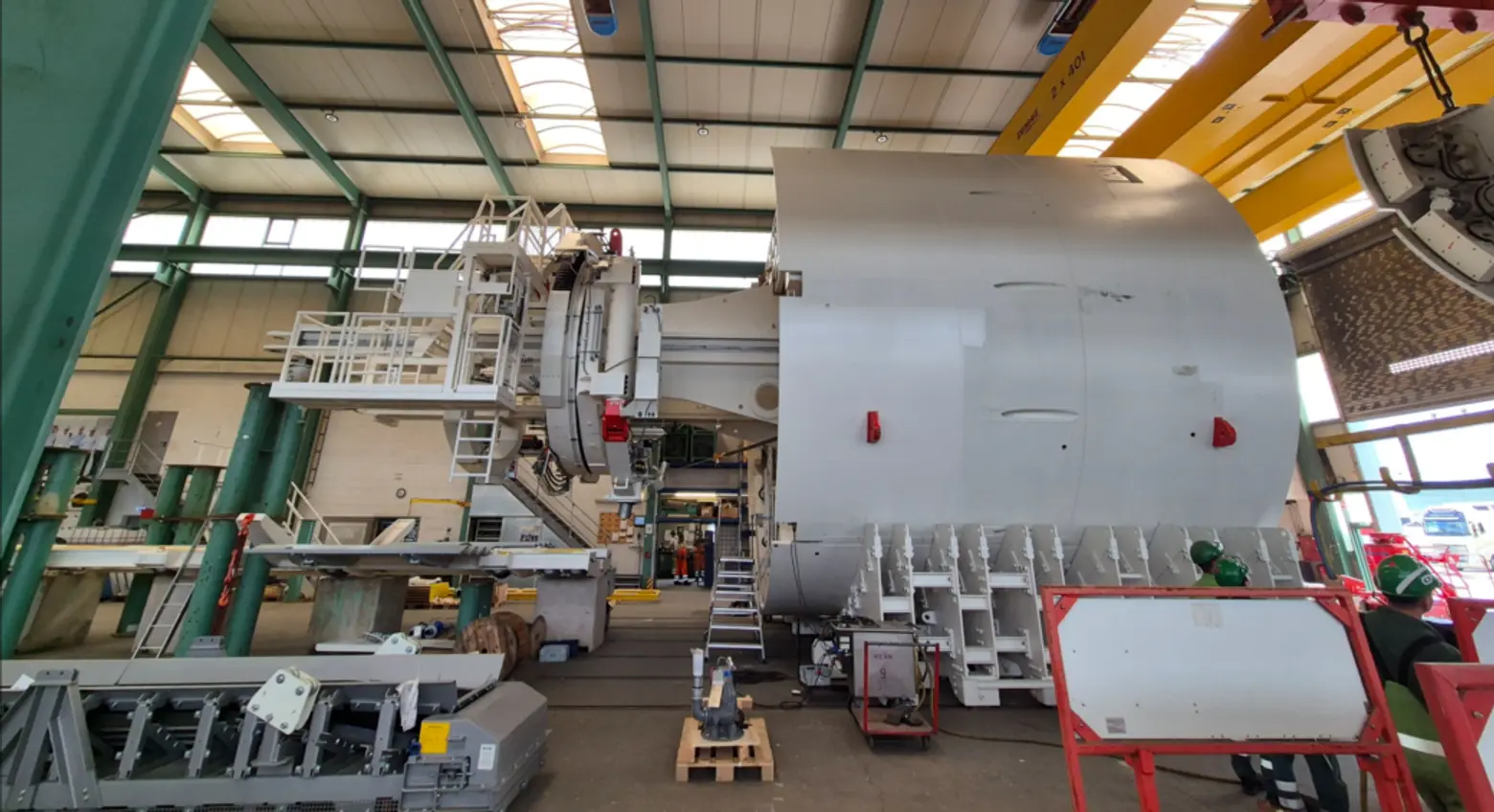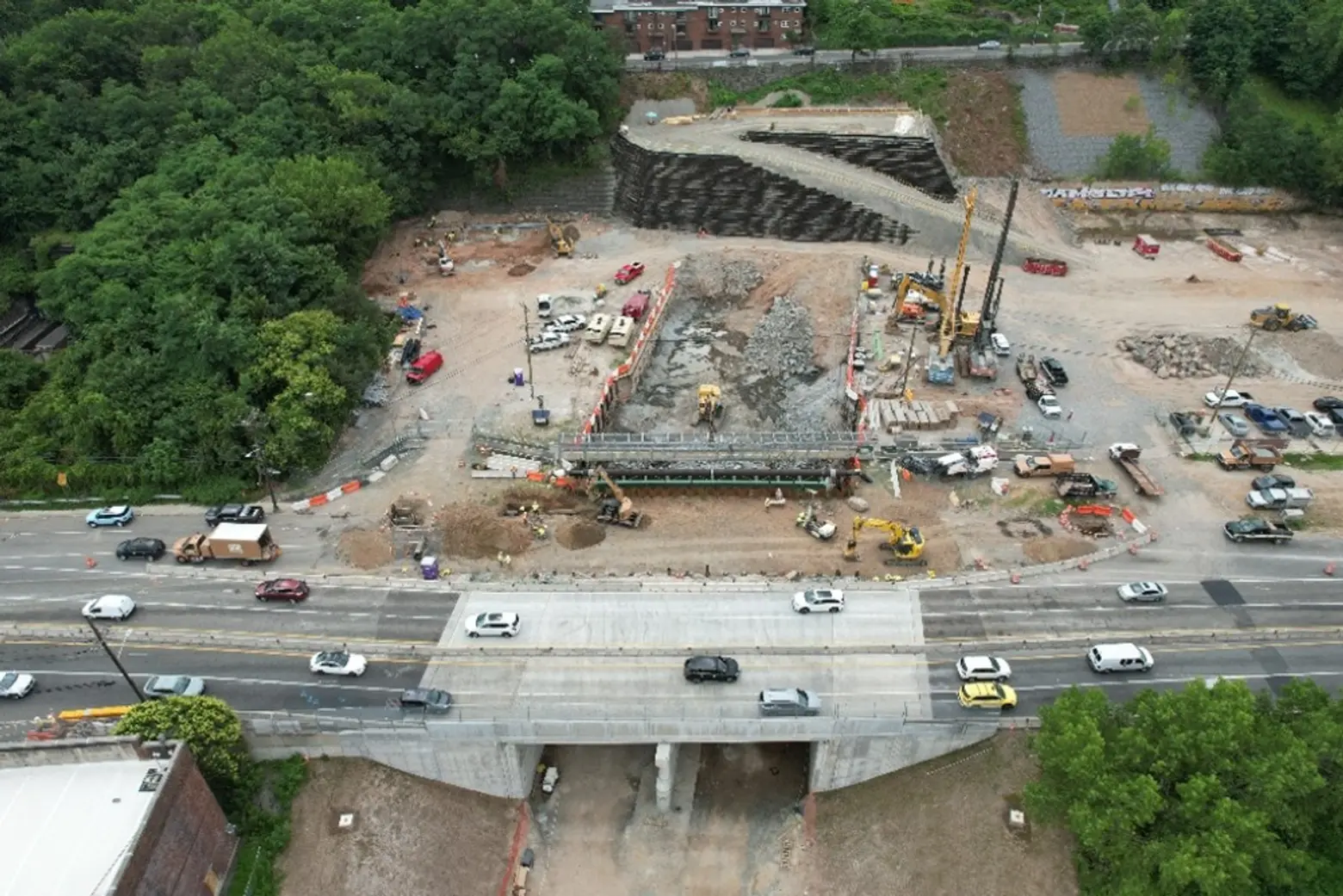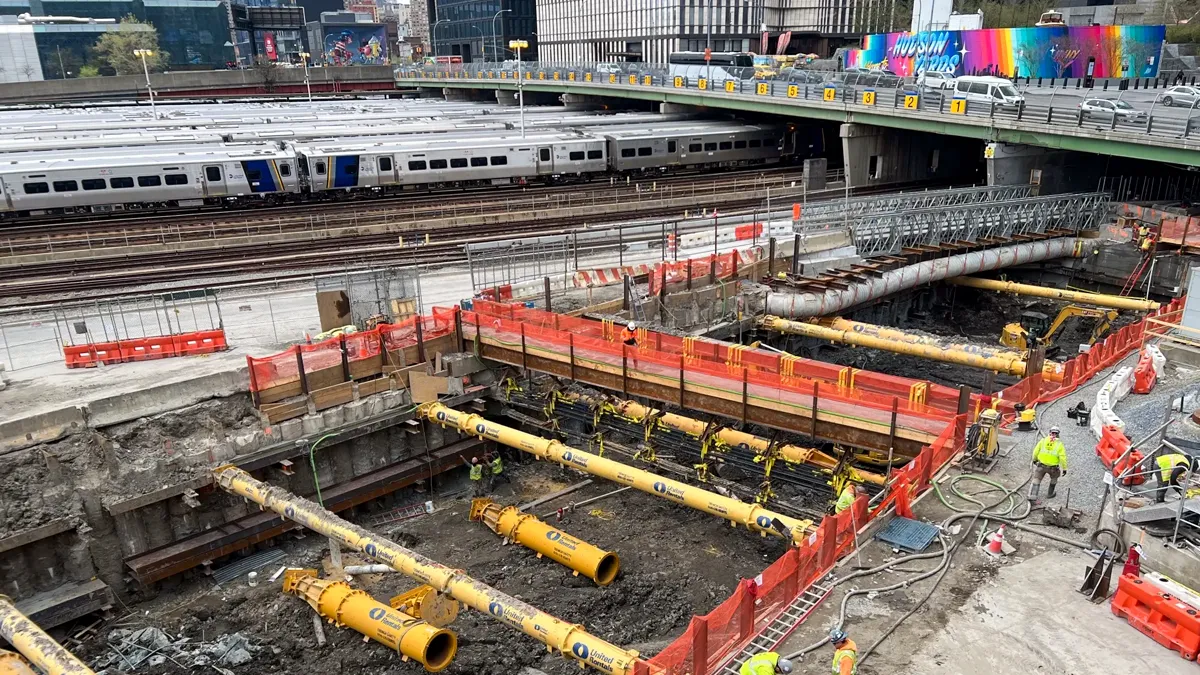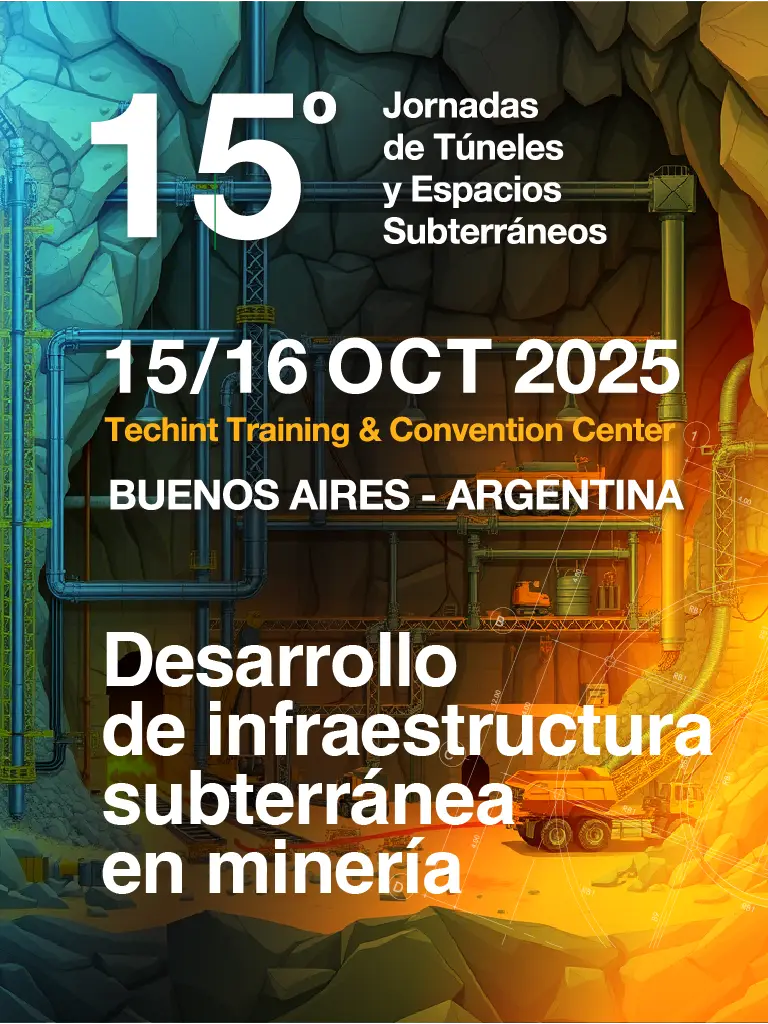The Gateway Development Commission (GDC) announced last week that two massive tunnel boring machines (TBMs) will arrive early next year to start digging the 2.4-mile connection to Penn Station. The machines are expected to take about a year to dig the first mile of tunnel from Tonnelle Avenue in North Bergen, where crews have spent the past two years preparing the site, to an access shaft in Hudson County, which is currently under construction.

Built by Germany-based manufacturer Herrenknecht, the massive boring machines measure nearly 29 feet in diameter and stretch longer than a football field. The cutting-edge equipment will carve through the rock beneath the Palisades, according to Crain’s.
Procurement, manufacturing, and factory assembly of the first and second TBMs are 85 and 73 percent complete, respectively. Manufacturing of the first machine is expected to wrap up in the coming weeks, with both completed by November. Once finished, the machines will be shipped to NJ for on-site assembly before boring operations start in 2026.
Thanks to their massive size, the machines can carve out roughly 30 feet of tunnel each day. As they move forward, they’ll dig the two parallel tunnels and place the concrete lining behind them. More than 1,000 sensors will track the machines’ underground position, monitor wear and tear on key components, measure air quality, and capture other data to ensure safe and efficient tunneling.

Work on the first phase began in November 2023, with crews raising Tonnelle Avenue to provide a 19-foot clearance above the train tracks and building a bridge that leads into the new tunnel’s mouth.
“While we may use tunnel boring machines instead of picks and shovels to dig tunnels now, the process of building a concrete tube under a river is still a remarkable challenge,” Tom Prendergast, CEO of GDC, said.
“The TBMs that we will use for the Hudson Tunnel Project are massive, highly complex machines, and it took nearly two years of construction to prepare for their arrival. Thousands of people across multiple construction teams are working incredibly hard to reach this important milestone on schedule.”
The $16 billion Hudson Tunnel Project, part of the broader Gateway Program, is building a new, two-tube rail tunnel under the Hudson River and rehabilitating the deteriorating tunnels that connect NJ and NY. The existing pair, more than 110 years old, suffered significant damage during Superstorm Sandy in 2012 and has continued to deteriorate since.
The tunnel requires constant maintenance, leading to numerous delays that impact the commutes of hundreds of thousands of riders. In 2020 alone, passengers endured more than 12,600 minutes of delays tied to the tunnel’s aging infrastructure, according to a statement from the White House.
Despite its aging condition, the tunnel is a critical part of the economy. If it were to shut down for just one day, it would cost the nation’s economy roughly $100 billion, as 6sqft previously reported.
The project is expected to create roughly 95,000 direct and indirect jobs during construction and generate up to $19.6 billion in economic benefits for the region, according to the Regional Plan Association.
Work on a similar project began in 2010, but was discarded by former Gov. Chris Christie, who feared that NJ would be left to pay for the project’s $8.7 billion price tag. Gateway was seen as a priority under President Barack Obama’s administration, and the federal government agreed to split the cost with NJ and NY.
While President Donald Trump withheld funding for the project during his first term, Prendergast told Spectrum News there is no indication his administration will interfere with the Hudson Tunnel project this time.
The total $16 billion cost of the Hudson Tunnel Project will be shared between the federal government and the project’s local partners: New York, New Jersey, and the Port Authority of New York and New Jersey (PANYNJ).
The project is receiving funding from the New Starts Capital Investment Grant (CIG) Program, USDOT’s Federal-State Partnership for Intercity Passenger Rail (FSP) Program, the Bipartisan Infrastructure Law’s Mega grant program, and the Rebuilding American Infrastructure with Sustainability and Equity (RAISE) Program.
Amtrak is contributing an additional $1 billion. The local portion is being funded using Railroad Rehabilitation and Improvement Financing (RRIF) loans from the Build America Bureau.







